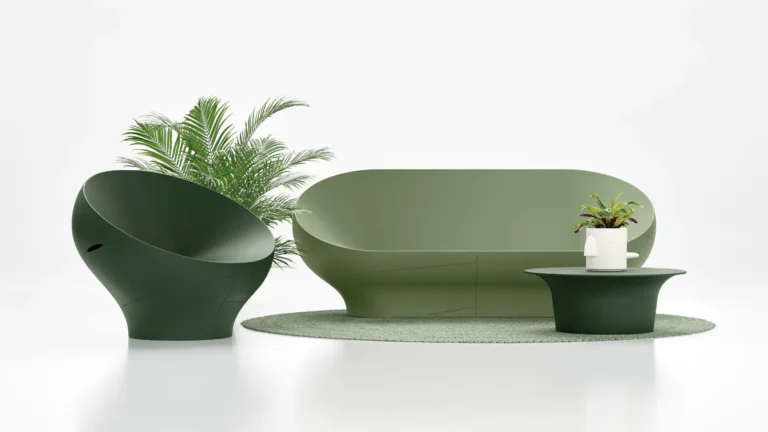From Disappointment to Opportunity How PenumbraOS Is Giving the Humane AI Pin a Second Life
In the world of technology, nothing really dies. Even products that seemed like failures at first can spark unexpected innovation. That’s exactly what’s happening with the Humane AI Pin , a device that once promised a futuristic way to interact with AI only to become a symbol of unmet expectations and wasted potential.
A Promising Start That Fizzled Out
A little over a year ago, many early adopters spent around $700 on the sleek Humane AI Pin, seduced by bold claims of a wearable assistant that could project information directly onto your palm. It was supposed to be the next big thing a hands-free, screenless way to stay connected through voice and light.
But things didn’t go as planned. Not long after its launch, Humane shut down its cloud services , leaving users with a stylish but largely useless gadget. What was once a conversation starter quickly became a source of regret:
What’s that thing?
Oh, just my $700 tech experiment that didn’t work out.
A New Beginning: PenumbraOS Brings Hope
Enter Adam Gastineau , a developer who saw more than just a failed gadget in the Humane AI Pin. He saw potential. Over roughly 400 hours , he reverse-engineered the device and built PenumbraOS a custom operating system designed to turn this abandoned wearable into a fully functional development platform.
It’s not just a quick hack or a temporary fix. This is a serious effort to unlock the device’s full capabilities, treating it as a specialized Android-powered tool with unique hardware features.

| Key Details | PenumbraOS |
|---|---|
| Developer | Adam Gastineau |
| Time Invested | ~400 hours |
| Project Type | Experimental open-source OS |
| Core App | MABL – a new user interface from scratch |
How Does It Work?
The real magic of PenumbraOS lies in its ability to run untrusted apps with elevated permissions essentially opening up the device to developers in ways that weren’t possible before.
At the heart of the system is MABL , a completely redesigned interface that replaces the original AI assistant. While still experimental, it offers a solid foundation for further development, giving curious minds a chance to explore what this hardware can really do.

Why Should You Care?
Because the Humane AI Pin wasn’t just another failed gadget it had genuinely cool features:
- A tiny laser projector that could be used for AR or interactive displays
- An array of sensors , including mics, cameras, and motion detectors
- A compact, wearable form factor that still feels ahead of its time
With PenumbraOS , these components are getting a second shot freed from the closed ecosystem that originally held them back.
| Feature | Before PenumbraOS | After PenumbraOS |
|---|---|---|
| Usability | Cloud-dependent, limited functions | Fully customizable, local control |
| Target Audience | General consumers | Developers & tech enthusiasts |
| Capabilities | Restricted by software | Open for experimentation |
| Support | Officially discontinued | Community-driven, growing |
When Companies Fail, Communities Step In
This isn’t just one person tinkering in their free time PenumbraOS is now open on GitHub , actively inviting contributions from the wider developer community. It’s a beautiful example of how when companies fail, passionate individuals can step in and keep valuable technology alive.
It’s also a reminder that innovation doesn’t always come from boardrooms and marketing campaigns. Sometimes, it starts with someone asking, What if this wasn’t the end?

Should You Give It Another Shot?
If you’re one of the many people who bought a Humane AI Pin and let it collect dust, maybe it’s time to pull it out again. With PenumbraOS , it’s no longer just a pricey mistake it’s a chance to dive into something new, learn, and even contribute to an evolving project.
Final Thoughts
Beyond the hype and broken promises, the story of the Humane AI Pin and PenumbraOS shows us that failure isn’t always final. Sometimes, it’s just the beginning of something better especially when passionate people refuse to let good hardware go to waste.
ArchUp: A Live Chronicle of the Arab and Global Architectural Scene
Since its launch, ArchUp has aimed to build an open knowledge archive covering everything related to architecture, design, and urbanism in the Arab world and beyond. We strive to provide neutral, encyclopedic content written in a professional tone, aimed at every architect, researcher, student, or decision-maker.
The content is managed by a dedicated editorial team that ensures daily review and updates of news, articles, and design data. We invite you to reach out via our Contact Us page to contribute, suggest, or collaborate in expanding the architectural knowledge network we are building together.







